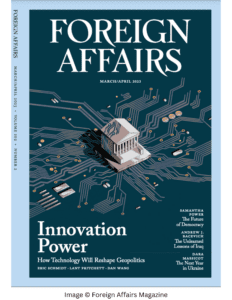 The following excerpt was written by LaMP Research Director Lant Pritchett and originally published by Foreign Affairs on February 28, 2023 here.
The following excerpt was written by LaMP Research Director Lant Pritchett and originally published by Foreign Affairs on February 28, 2023 here.
“Automation is often a solution in search of a problem. It is a choice people have made, not an inevitability and certainly not a necessity. For instance, the United States faces a scarcity of truck drivers. The American Trucking Association has estimated that in 2021 there were 80,000 fewer drivers than the total needed and that, given the age of current drivers, over a million new ones will have to be recruited in the coming decade. To deal with this deficit, many tech moguls, including Amazon founder Jeff Bezos, have invested in the research and development of self-driving vehicles, technology that would reduce the demand for drivers. For Bezos, such technology makes corporate financial sense; Amazon relies on low shipping costs to keep its prices down. But it does not make wider economic sense because millions of people would be happy to drive trucks in the United States—they just need to be allowed to work in the country.
There is no global scarcity of people who would like to be long-haul truck drivers in the United States, where the median wage for such work is $23 per hour. In the developing world, truck drivers make around $4 per hour. Yet firms cannot recruit workers from abroad even at the higher wage because of restrictions on immigration, so business leaders in the United States are impelled to choose machines over people and eradicate jobs through the use of technology. But if they could recruit globally, they would have less incentive to destroy those jobs and replace people with machines. The implacable fact of national borders steers businesses toward investing in technology that does not respond to global scarcities—and that no one really needs.
What is true for truck driving is also true for many other industries in the rich industrial world that require nonprofessional workers in specific work environments. A 2021 report by the financial services company Mercer estimated that, by 2025, the United States would face a shortage of some 660,000 home health aides, lab technicians, and nursing assistants.
Barriers to migration encourage a terrible misdirection of resources. In the world’s most productive economies, the capital and energies of business leaders (not to mention the time and talents of highly educated scientists and engineers) get sucked into developing technology that will minimize the use of one of the most abundant resources on the planet: labor. Raw labor power is the most important (and often the only) asset low-income people around the world have. The drive to make machines that perform roles that could easily be fulfilled by people not only wastes money but helps keep the poorest poor.”
Read the full Foreign Affairs article here.
